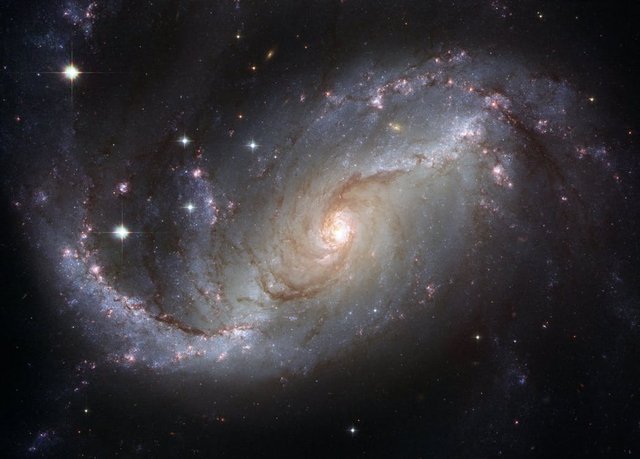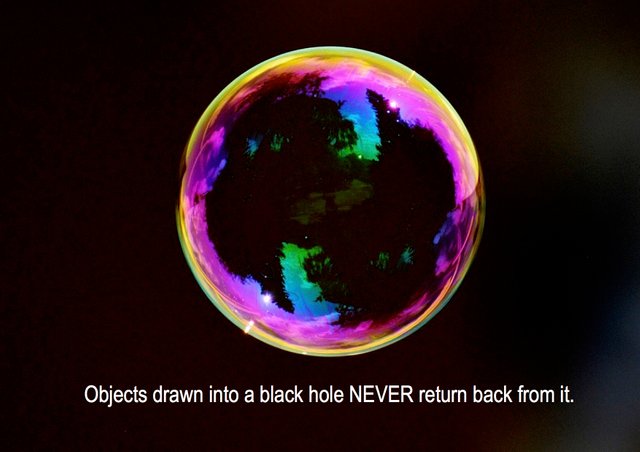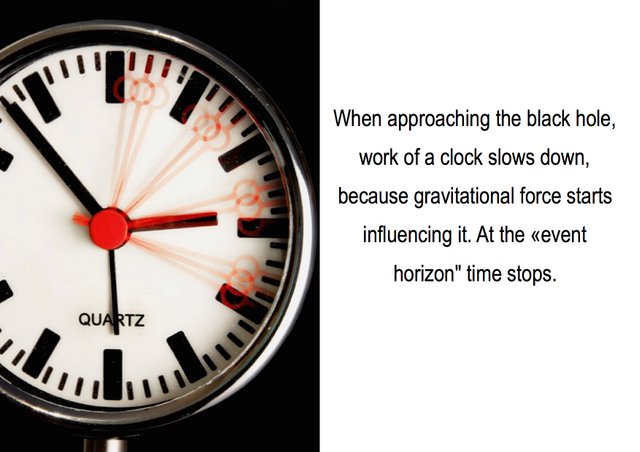
The starry sky bewitches: what's there? how is everything arranged? is it arranged how we know it? I propose to get acquainted with some information that is known to mankind about black holes in the universe.
After learning the lectures of the course of «Greatest Unsolved Mysteries of the Universe» by Australian National University, as well as «The Evolving Universe» by Caltech, I tried to convey complex (to my mind) information in an understandable language. Honestly, I do not understand profoundly physical terms and concepts, but it was interesting to me to deepen into the material and get an idea of this huge and incredible cosmic phenomenon.
Professor Brian Schmidt and researcher of astrophysics Paul Francis spoke about the following.
50 years ago, the universe was considered an "understandable" place — it was calm, peaceful, people saw the stars and knew something about the planets. But over time and the development of technology, people began to notice and see things that could not be explained. Therefore, the universe turned into an unidentified territory.
The impetus for knowledge was made by radio engineers during the Second World War: with the help of radio stations, engineers began to catch the signals not only of approaching bombers and ships, but also something that they did not know about. By the way, because of this, there was a conflict of astronomers with engineers.
During the following decades, an enormous unexplored zone was discovered in astronomy and attempts were made to create a map of this territory.

If you look at the 1000 most visually bright bodies, you can identify stars, planets and the Sun, and if you look at 1000 distinct cosmic sources of radio emissions, you can find few coincidences (intersections) from this list. For example, Jupiter, the Sun and the Milky Way are on both lists, but most of the strong radio sources are not visually distinct and vice versa.
In the 1950s and 1960s, a group from Manchester compiled a map of space using the Cambridge catalog of radio sources. The problem was that it was impossible to know where these radio sources in space were located. The invention of the Parkes Observatory was followed by the brilliant idea of studying cosmic bodies.
THE IDEA OF RESEARCH OF THE RADIO SOURCE
Radio source 3C 273 was taken for consideration and it was calculated that the Moon had to pass before it. Given the angle of passage, astronomists suggested that one might notice flickering of an invisible object. But since only the limb could be visible (the visible edge of the planet's disk), it would be difficult to locate the source of interest. The solution was found by Cyril Hazard: The moon was so low in the sky that the telescope could not "grasp" and fix it, then the astronomer came up with the idea to dig a hole in the ground, lowering the telescope as low as possible. The experiment was successful and thanks to observation, the exact location of 3C273 was determined, accordingly, it was possible to direct optical telescopes to a certain place and to investigate the radio source.
WHAT WAS DETECTED?
The source was mysterious — a small star, from which a thin "ray" came, while the spectrum of light had nothing to do with what the astronomers knew about earlier.
Such phenomena are called Quasars — quasi (i.e., similar) stellar radio source. Quasars only looks like stars, but there is no evidence that this is so, so the prefix "quasi" was created for this word.
*The spectrum of quasars is very narrow, because atoms are monochrome.
*Quasars are located very far from the Earth.
*According to science, black holes are located in quasars.
From Wikipedia:
Quasar's luminosity is, therefore, about 4 trillion (4 × 1012) times that of the Sun, or about 100 times that of the total light of giant galaxies like the Milky Way.[15] This assumes the quasar is radiating energy in all directions, but the active galactic nucleus is believed to be radiating preferentially in the direction of its jet.
BLACK HOLE
S.George Djorgovski, professor of astronomy, talks about the deduced formula concerning particles: for a certain mass of a particle, the radius of motion can be reduced, thus its velocity will increase; or for a certain radius, we need to add masses, and this will also increase the motion.
In a black hole, gravity warps space and it is so large that even objects that move at the speed of light, including the quanta of light itself, can not leave it. Such a critical speed (when the kinetic energy overcomes the potential) is called escape velocity.
Under the influence of gravitational collapse, bodies move, and they move until they compress to a single point, which acquires a finite mass and a large density, as well as incredible gravity. This is called gravitational singularity. In a simpler language, in the center of a black hole, space-time becomes infinitely curved, the laws of physics that we understand are not valid there.

It is difficult to say what happens inside a black hole, but it is known that in any case, the mass must be compressed into a very small volume. It is worth mentioning that such a gravitational radius (the Schwarzwild radius) is a characteristic radius for any physical body that has a mass, this is the radius of the sphere (on which the event horizon would be) if the sphere were symmetrical and motionless. For example, a black hole with a mass such as the Sun would have a radius of 3 km, and for the Earth this figure would be 9 mm. The gravitational radius and mass are directly proportional.
If you squeeze the Earth to the size of a pebble, this would be an example of a black hole.
Any object (regardless of size) can become a black hole if the conditions above are met. Concerning the density of black holes: more massive black holes have less density.
In case of black holes rotation, the situation becomes a little more complicated.

HOCKING RADIATION
In black holes, entropy is largely present, and also they are characterized by presence of temperature. According to quantum physics, pairs of particle-antiparticles are constantly produced within the vacuum. But what happens if this occurs outside the event horizon and this pair is an electron-positron? It is obvious that one of the particles enters a black hole. The second, remaining from the outside, is looking for a "pair" and can disappear. This is a simplified descriptive model, in fact, everything is more complicated.
So, the energy (to produce radiation) comes from the rest of the mass of black hole energy, so particles have temperature, brightness, entropy and thermodynamic properties. This assumption is purely theory, but enough convincing. It is interesting that the temperature of a black body and a black hole is inversely proportional to its mass. The smaller, the warmer. Consequently, the higher speed, the faster rate of processes, the evaporation rate increases and the black hole loses mass, which, in the end, can lead to an explosion, and the black hole disappears.
If you calculate by the formula, how long it takes and compare the figures in the age of the universe, it becomes clear that they exist and will continue to exist for a long time. This process, unfortunately, and maybe, fortunately, we will not observe.
The pictures are under license CC0.
Very informative and interesting post. thanks for this! @crazy-daisy
Downvoting a post can decrease pending rewards and make it less visible. Common reasons:
Submit
Thank u!
Downvoting a post can decrease pending rewards and make it less visible. Common reasons:
Submit
I never get tired of this type of science. Great post..
Downvoting a post can decrease pending rewards and make it less visible. Common reasons:
Submit
I am glad u like it!
Downvoting a post can decrease pending rewards and make it less visible. Common reasons:
Submit
This post was resteemed by @resteembot!
Good Luck!
Curious? Check out:
The @resteembot users are a small but growing community.
Check out the other resteemed posts in resteembot's feed.
Some of them are truly great.
Downvoting a post can decrease pending rewards and make it less visible. Common reasons:
Submit
very interesting!
Downvoting a post can decrease pending rewards and make it less visible. Common reasons:
Submit
Thanks)
Downvoting a post can decrease pending rewards and make it less visible. Common reasons:
Submit
Last year scientists discovered that there is actually a black hole at the center of absolutely every galaxy.
Downvoting a post can decrease pending rewards and make it less visible. Common reasons:
Submit
thanks for your science article. Resteemed
Downvoting a post can decrease pending rewards and make it less visible. Common reasons:
Submit
Actually we don't know if time is passing or we are passing through time we are just charmed by it's seductive beauty
Downvoting a post can decrease pending rewards and make it less visible. Common reasons:
Submit
This is it)
Downvoting a post can decrease pending rewards and make it less visible. Common reasons:
Submit
Black holes exist in theory only. No obersavations with physical backup data. Same as with the Big Bang.
Even better - the theory of Big Bang does not allow the existance of Black holes; and the theories of Black holes do not allow a Big Bang.
So what is it?
Downvoting a post can decrease pending rewards and make it less visible. Common reasons:
Submit
An informative piece, great work @crazy-daisy!
Are you a physicist (or an avid physics fan like myself), by any chance?
Downvoting a post can decrease pending rewards and make it less visible. Common reasons:
Submit
Thanks! No, I am not a scientist, I just like to study different stuff, especially on online courses.
Downvoting a post can decrease pending rewards and make it less visible. Common reasons:
Submit